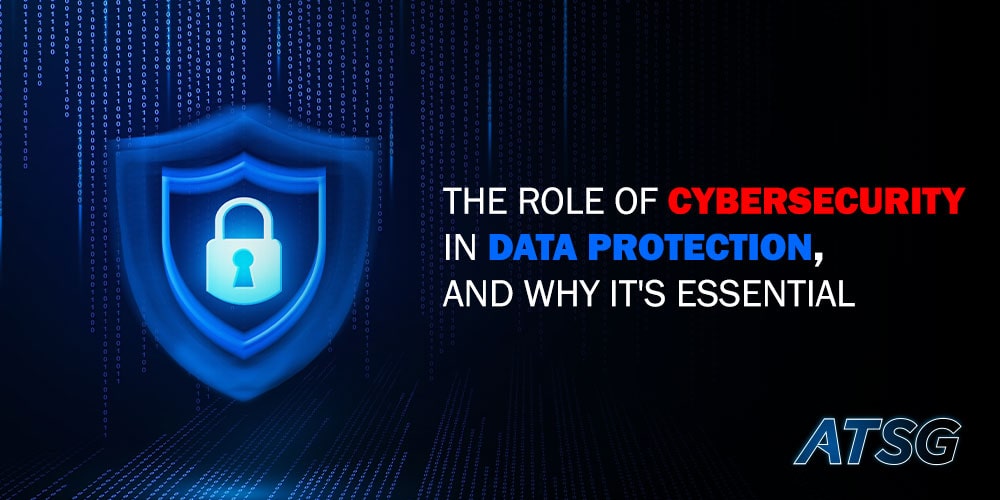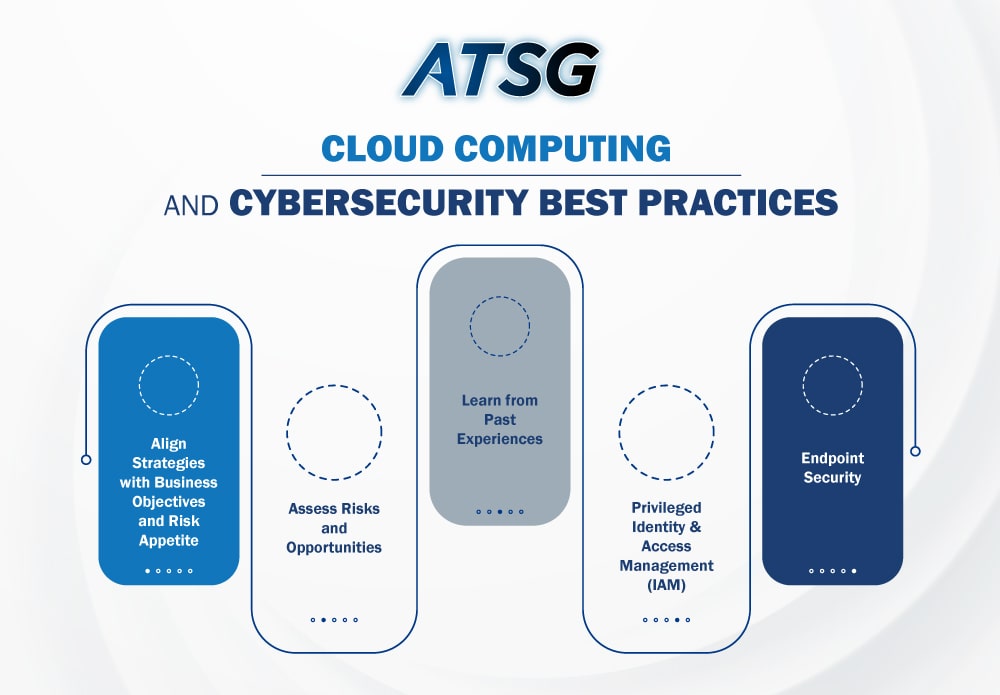As our digital landscape continues to evolve at a rapid pace, cyberattacks have reached unprecedented levels of sophistication. Present day cyber threats have escalated to a point where they can even inflict significant harm to an enterprise. Now, cyber miscreants even harness the power of Artificial Intelligence (AI) and Machine Learning (ML), to exploit vulnerabilities and wreak havoc.
With so much on the line, business executives and IT leaders across industries have come to realize the gravity of the situation. However, what truly amplifies their concerns is the dangerous and vulnerable state of their most valuable asset; data.

Given these challenges, it’s no surprise that cybersecurity has become a crucial factor when considering a shift to the Cloud. Organizations do understand the urgency to provide seamless access to data and applications for employees, partners and customers, via the Cloud. However, they also face the daunting challenge of protecting a vast digital infrastructure, spread across multiple locations and accessed through diverse channels as well as endpoint devices.
To strengthen the security of their digital assets, businesses should adopt a comprehensive approach towards cybersecurity, which duly incorporates cutting-edge Cloud Computing technologies in their operations.
This way, they can enjoy the benefits of enhanced security, scalability and flexibility, while effectively managing and mitigating the risks associated with cyber threats and data breaches.
Benefits of Cloud Computing for Risk Management
Imagine having the power to manage your business risks with ease, from anywhere in the world, without the hassle of expensive hardware or software. That’s where Cloud Computing really comes in, offering a multitude of benefits for risk management.
With Cloud services, businesses can gain the scalability and flexibility to adjust their resources as well as capacity, according to evolving needs. This in turn reduces costs, and also promotes innovation as well as agility.
However, before we dive headfirst into the Cloud, it is crucial to be aware of the potential costs and risks that come with it. Service outages and regulatory compliance are among the most common issues surrounding Cloud Computing. However, the wide array of benefits of the Cloud far outweigh any concerns, making it a worthwhile choice for enterprises.
The Importance and Benefits of Cybersecurity
Businesses that prioritize and demonstrate a commitment to cybersecurity gain a distinct competitive edge. In this section, we will briefly delve into the key reasons why cybersecurity is crucial for businesses today.
- Robust cybersecurity measures serve as a formidable defense against a wide array of cyber threats, including data breaches, malware attacks, ransomware, and deceptive phishing attempts.
- With cybersecurity in place, enterprises can effectively protect sensitive data, such as customer information, intellectual property, financial records and trade secrets. This ensures that un-authorized access and data leakage are effectively prevented.
- By implementing strong cybersecurity controls and practices, businesses can also cultivate trust among customers, partners, regulators, and other key stakeholders. This fosters a positive reputation, and improves business relationships. It also instills confidence in the security of sensitive information.
- Cybersecurity measures also enable enterprises to meet regulatory requirements and leading industry standards. By ensuring legal compliance, businesses can avoid penalties and legal liabilities.
- The implementation of robust cybersecurity measures also enhances a company’s resilience towards cyber incidents. This minimizes downtime and improves Business Continuity (BC) as well as Disaster Recovery (DR).
- Investing beforehand in cybersecurity is also a very prudent financial decision. By proactively averting disruptive cyberattacks and expensive data breaches, businesses can avoid the substantial financial and reputational damages associated with such incidents.
Cloud Computing and Cybersecurity Best Practices
In the vast expanse of the digital universe, where technology reigns supreme, it is imperative for businesses to harness the might of Cloud Computing and Cybersecurity.
The following section highlights best practices that can help your enterprise amidst the “ever-shifting tides” of the digital age.

Align Strategies with Business Objectives and Risk Appetite
It is crucial to make sure your Cloud Computing and Cybersecurity strategies are well-aligned with your overall business objectives, and risk tolerance. By understanding the specific needs and priorities of your enterprise, you can tailor your approach accordingly.
Assess Risks and Opportunities
Take the time to conduct a comprehensive risk assessment. This will help you identify potential threats and vulnerabilities in your Cloud environment. Additionally, consider the opportunities that Cloud Computing brings to the table, and how they align with your business goals. It is important to consider both internal and external factors that may impact your risk profile.
Learn from Past Experiences
Embrace a culture of learning and improvement by analyzing past incidents and experiences. Conduct post-incident reviews to gather valuable insights, and share them across your enterprise. This helps prevent recurrence, and fosters a proactive approach towards cybersecurity.
Privileged Identity & Access Management (IAM)
The protection of company data hinges on assigning and managing access with utmost care. Businesses should develop a dedicated concept for privileged identity and access management, in which they emphasize the separation of duties, roles and authorizations. All such practices also need to be properly documented.
Endpoint Security
Businesses must prioritize securing endpoint devices that access the Cloud. With potentially hundreds or thousands of devices involved, it is crucial to educate employees about the risks, and ensure devices are never left vulnerable. Robust endpoint security enhances overall Cloud infrastructure security.
Cloud Computing and Cybersecurity Risk Management
Our current business landscape is such that managing risks has become more important than ever. Back in the days, businesses used to focus on keeping workers and communities safe. Now, digital assets have also become just as important, if not more, than physical assets.
The integration of information technology (IT) systems with operational technology (OT) has connected different systems, making them vulnerable to a wide range of cyber threats. To overcome these challenges, we need to bridge the gap between OT and IT security, and break-down costly and risky silos.
By embracing Cloud Computing and Cybersecurity, we can strengthen our digital infrastructure, safeguard our data, and effectively manage risks. It is all about implementing comprehensive cybersecurity measures, and using innovative technologies to ensure our operations are secure, while taking maximum advantage of the Cloud’s immense potential.
If you are someone who is worried about the cybersecurity posture of your enterprise, look no further than ATSG’s Cybersecurity solutions, managed IT services, Cloud Computing solutions, and intelligent technology solutions.
We believe that keeping modern IT environments secure should not be a hassle for any business. That’s why at ATSG, we offer highly effective Managed Detection & Response (MDR) solutions.
Our comprehensive solutions can be tailored to your business needs and budget. ATSG’s team of experienced and certified experts is equipped with the latest knowledge-base and technologies to provide end-to-end security monitoring, threat detection and incident response.
In addition, our Cybersecurity Strategy formulation takes into account the findings of Cloud security assessments, ensuring that your enterprise is fortified at the strategic level. And that the finalized strategy fully takes into account the existing cybersecurity landscape, and regulatory compliance needs of your enterprise.
Additionally, with ATSG’s expertise in Zero Trust Network Architecture (ZTNA), you will enjoy robust user and device-level authentication protocols, providing secure data access that is purely based on job roles.
For all-encompassing protection, our Layered Application Security uses micro-segmentation to safeguard individual applications and workloads from both external threats and internal vulnerabilities.
So, rest easy! knowing that ATSG has you fully covered, when it comes to comprehensive cybersecurity solutions for your enterprise.




